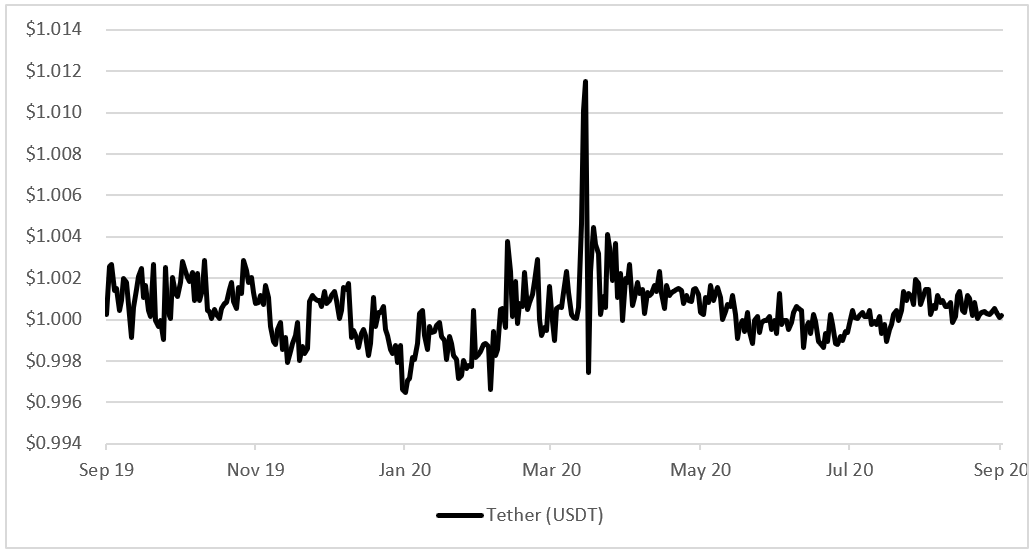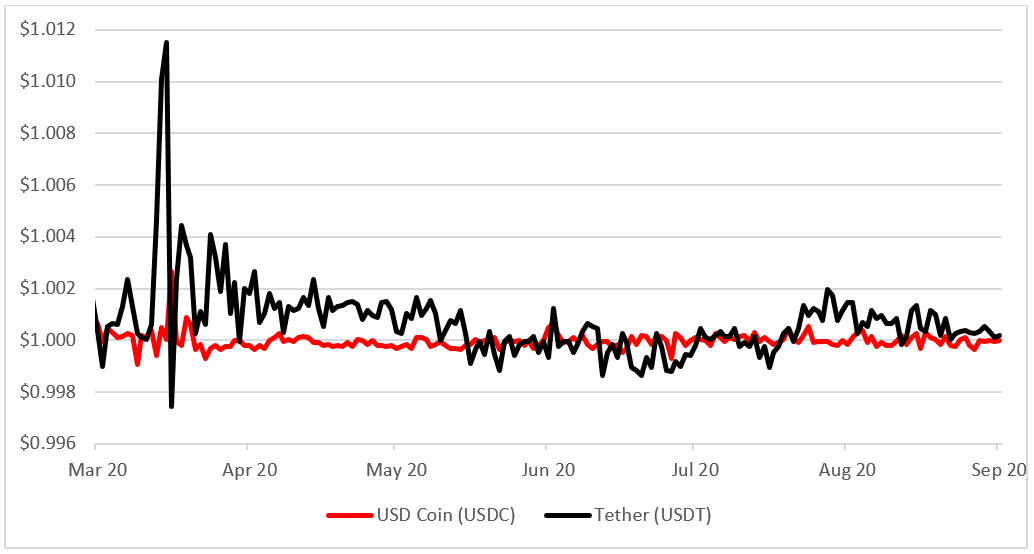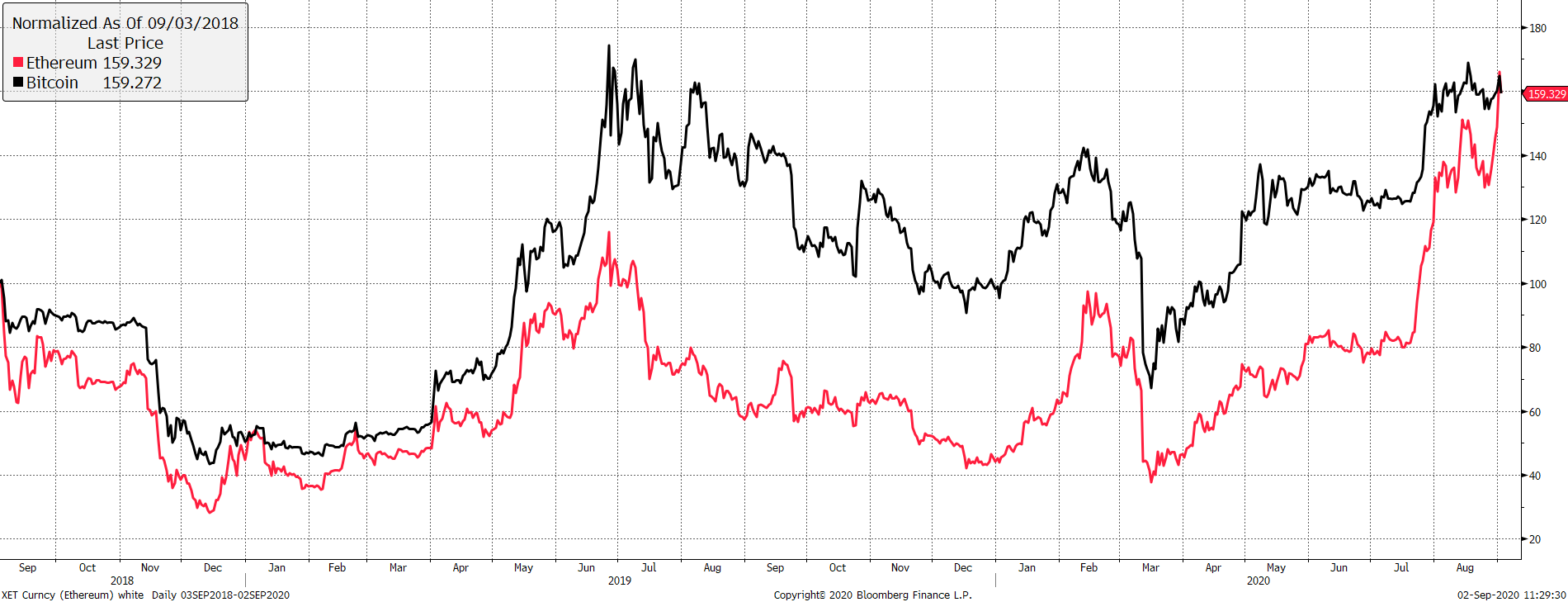Who is Holding the Buck?

Disclaimer: Your capital is at risk. This is not investment advice.
ByteTree Market Health Update; Issue 41
In the early years, investors who wanted to sell their crypto had to do so over an exchange and receive cash. This was both costly and impractical as the banks and regulators put up barriers in dealing with the crypto exchanges. As we have seen time and again in the crypto space, innovation solved the cash problem by way of stablecoins.
Most stablecoins are a substitute for cash but could be gold or anything you care to mention. They trade freely rather like a closed-ended company or an investment trust. For the dollar stablecoins, the promoters are keen to maintain price stability around the dollar, and they also want to maximise liquidity because that builds confidence. Crypto investors need to know they can trade in all market conditions without being disadvantage by “margarine” trading spreads. A trusted, stable and liquid stablecoin will flourish.
Stablecoins are typically built on the Ethereum network and are known as ERC-20 tokens. These tokens have a wide range of applications, but one of the great success stories has been to substitute cash within the crypto space. This was one of the early applications for decentralized finance (DeFi) and it has blossomed. It has enabled crypto investors to remain within the space, with a wider choice of investments aside from crypto itself. What this has effectively meant is that the fiat cash that has entered the space has had little reason to leave.
Tether (USDT)
US dollar stablecoins collectively represent $16.8 billion, of which the market leader, Tether, holds $13.5 billion. Tether was released in 2014 as a Santa Monica start-up and it is safe to say that it is the market leader. Like everything on the internet, the winner takes all. Tether is the most liquid stablecoin and has over 2,000 trading pairs across a wide range of assets.
While all that sounds well and good, the transparency as to how it is backed by assets has raised alarms. They publish a transparency report that seems to show their assets are slightly higher than the value of the coins in circulation. But this is crypto so uncertainty lingers.
In May 2019, investors realised that Tether’s reserves, which promised to hold a dollar for every Tether in circulation, was a white lie. Tether’s reserves were in fact filled with a mixture of loans, other assets and ‘cash equivalents’; the promise of a 100% currency reserve was debunked. Fear of Tether sharing similarities to fractional reserve banking has caused a backlash and lack of confidence in the stablecoin. That said, Tether has managed to hold its peg to the UD dollar reasonably well.
Tether peg to the US dollar

It’s impressive how Tether’s treasury activities have held the price so close to a US dollar. Even during the Covid-19 crisis, it only deviated to $1.012, which compared to financial markets, is a win.
USD Coin (USDC)
Tether’s main competitor is USD coin, also known as USDC. It was created in early 2019 by the Circle group, with backing from Coinbase, which brings credibility and makes it more popular among institutional investors. Despite having a much smaller issuance of $1.4 billion, it claims to be the most used stablecoin across the digital asset ecosystem, with $90 billion of transactions to date and 463 trading pairs.
Platforms such as AAVE and Compound offer superior interest rates for USDC compared to Tether. These lending platforms have found more demand for USDC over Tether, largely because it has greater trust. At ByteTree, we believe that the gap between USDC and Tether will begin to close as users realise that without regular audits, Tether will be the less secure of the two. In reality, Tether is not a currency backed asset but instead falls into the category of an asset-backed stablecoin.
USDC is soon to release a V2, which will allow users to pay for transaction fees in USDC. This is a neat solution to the high gas fees on the Ethereum network. DeFi transactions can be complex and require multiple transactions to take place in the background. The boom in DeFi has seen these fees soar, and V2 aims to simplify this and reduce trading friction. A successful release of V2 will see usage of USDC increase significantly.
It is easy to see why USDC is more popular with institutional investors as it does the job it is asked to do. Tether has held the buck well, but USDC has done an even better job.
Holding the buck

Ethereum’s Rally
We highlighted Ethereum’s strength in July, and since then it has surged. It recently made a two-year high as tokenization has returned to the limelight, with ERC-20 tokens at the forefront. One difference from 2017 is that this time, it’s not ICOs, but DeFi.
The excitement around the long-awaited Ethereum 2.0 is also driving the price higher. The network wants to move from a proof of work system to a proof of stake. That essentially takes the power away from the miners and passes it to the users. On the one hand, it is more efficient and will reduce gas (transaction) fees, but some critics see it as less decentralized and therefore less secure. In our opinion, this will always be a trade-off, but if you want the price to appreciate, scale is a must.
Ether has caught up with Bitcoin

Over the past two years, Ether has merely caught up with Bitcoin, with most of the surge since July. It may well go higher, but as we have seen time and again, a surge in fees is rarely a good thing. It is telling you that the network is running at full capacity. On that basis at least, Bitcoin is a calmer trade.
Summary
As this DeFi movement continues, it is inevitable that stablecoins not just service crypto, but traditional assets as well. It has already begun, but there is so much more to be done. You can already buy the likes of Tesla, but I suspect the next move will see exotic metals, real estate, the long bond and a wide range of funds on offer.
The money comes in and never seems to leave. Why should it? It’s all here. As always with crypto, you don’t need to know what is actually happening, because everything is either already happening or soon going to happen. This space is unstoppable.

Comments ()